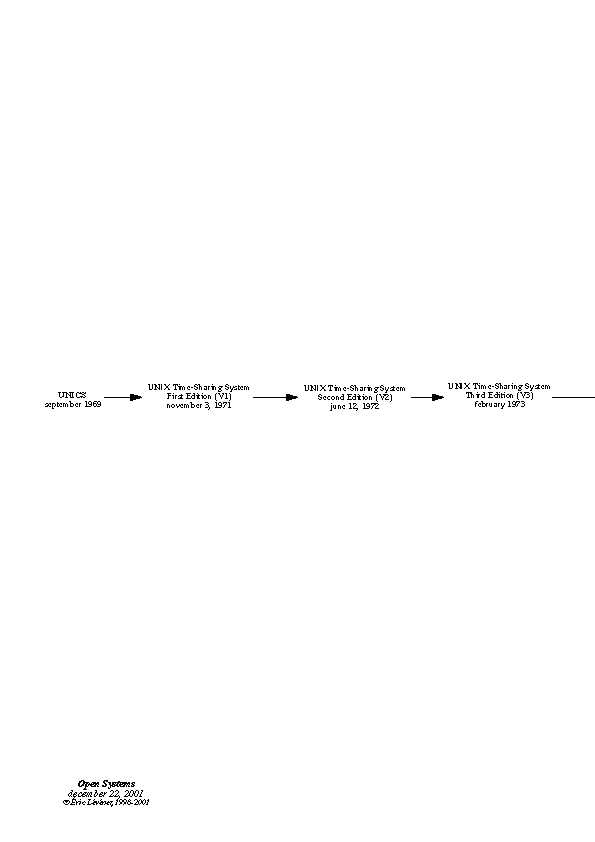 |
 |
 |
 |
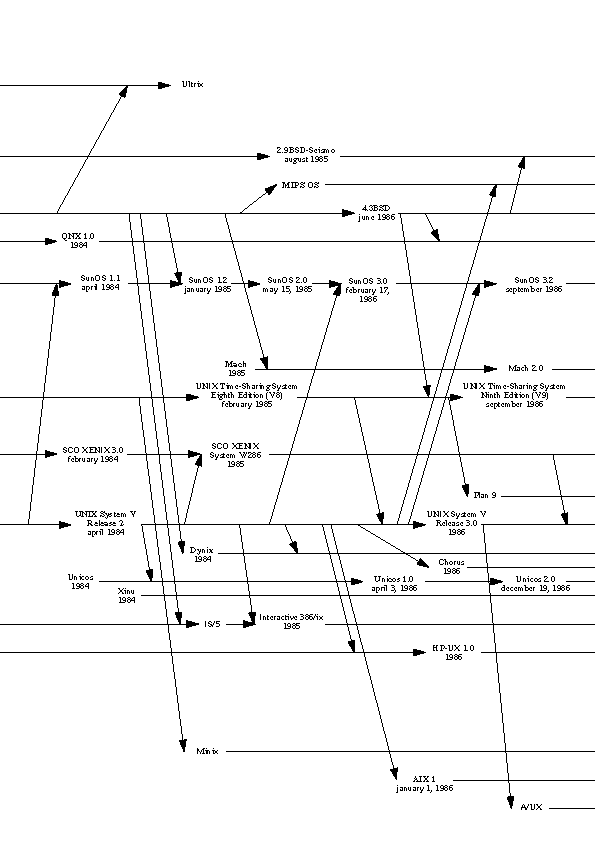 |
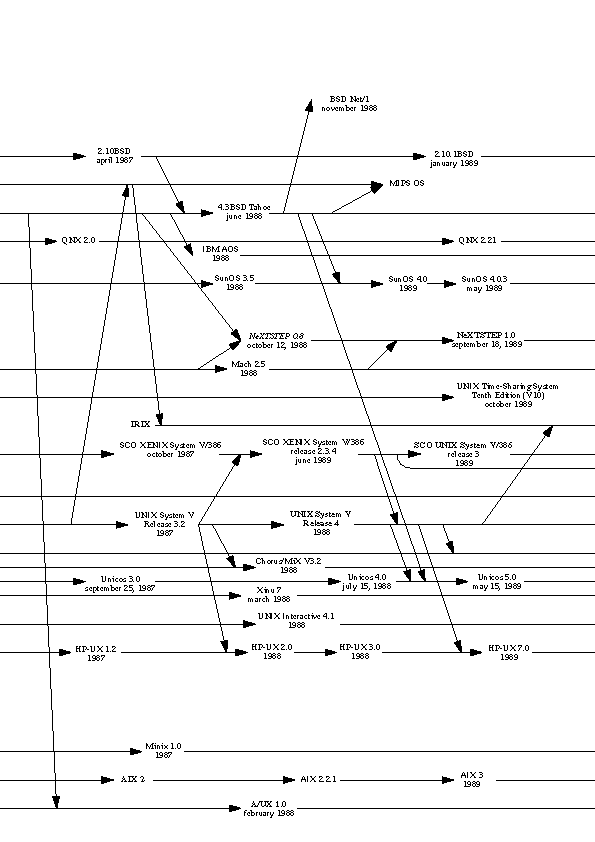 |
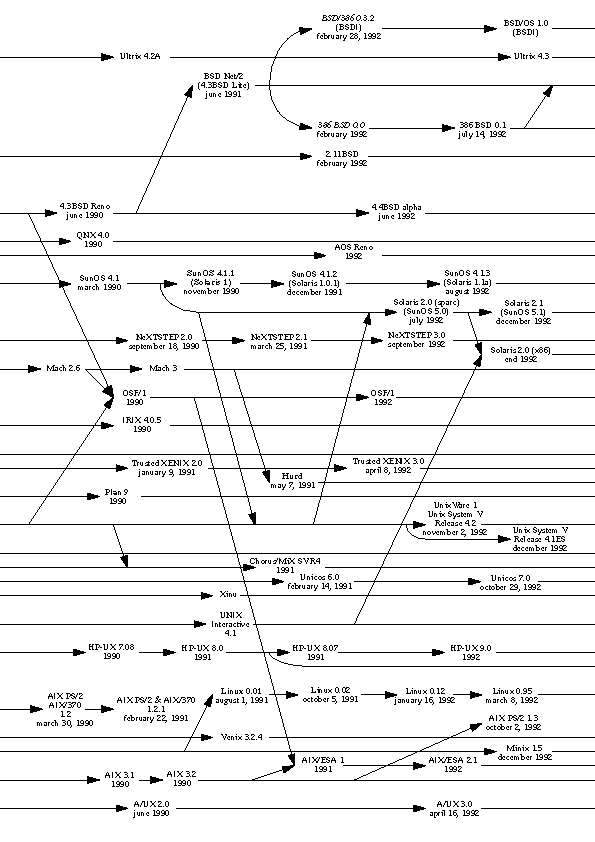 |
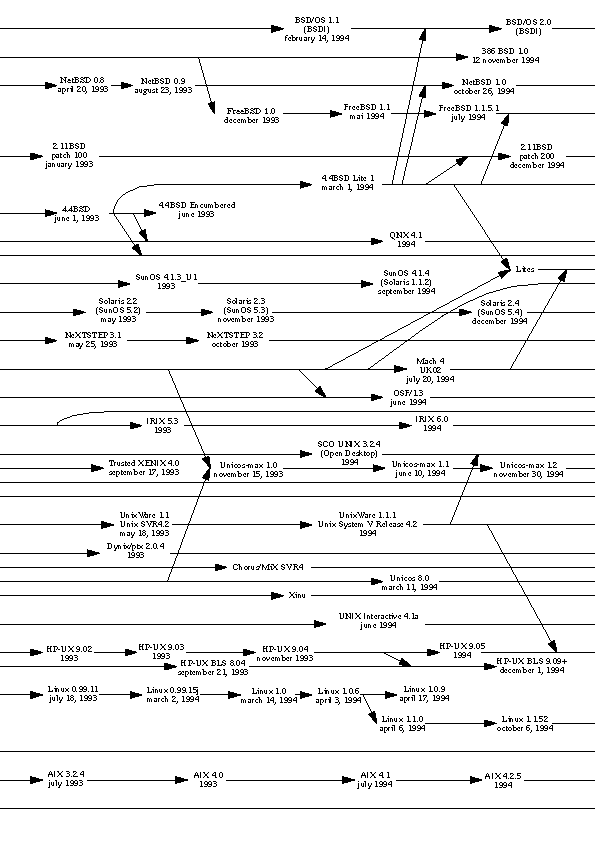 |
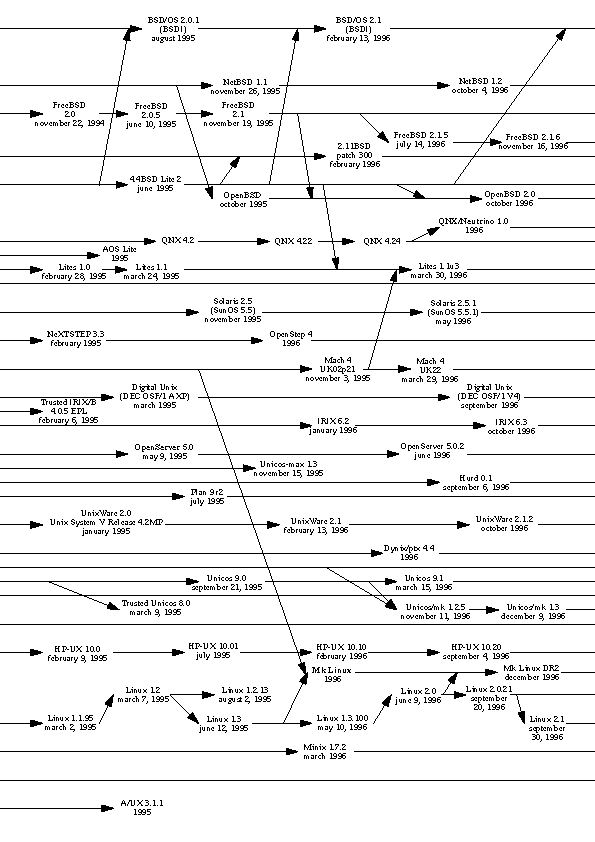 |
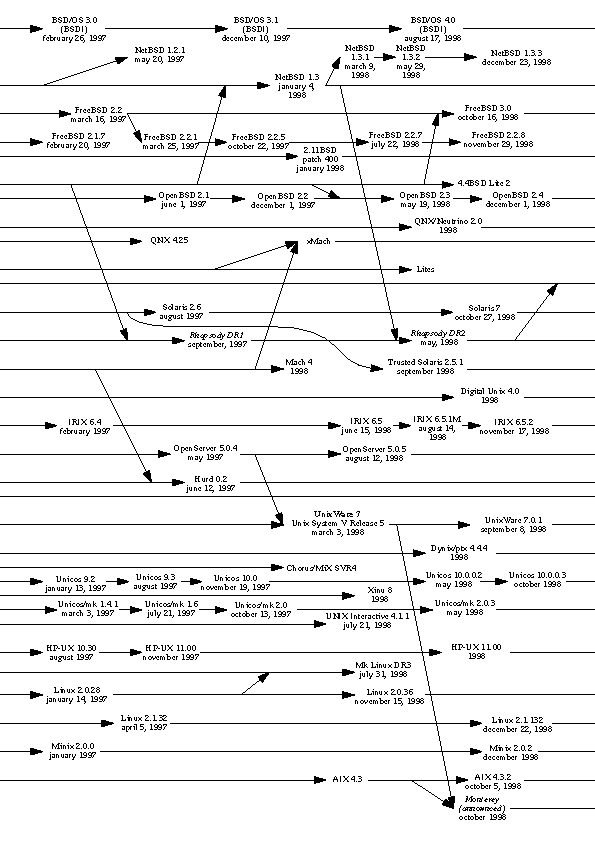 |
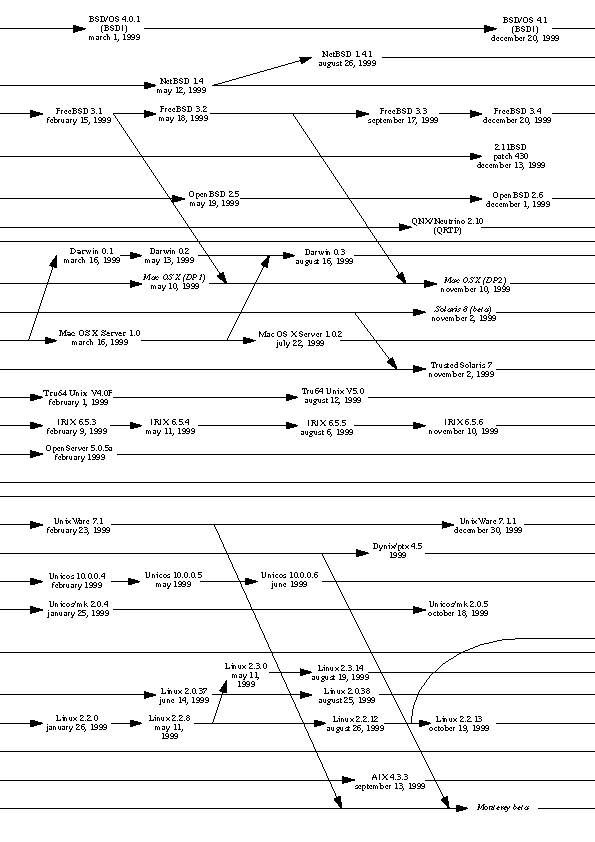 |
 |
 |
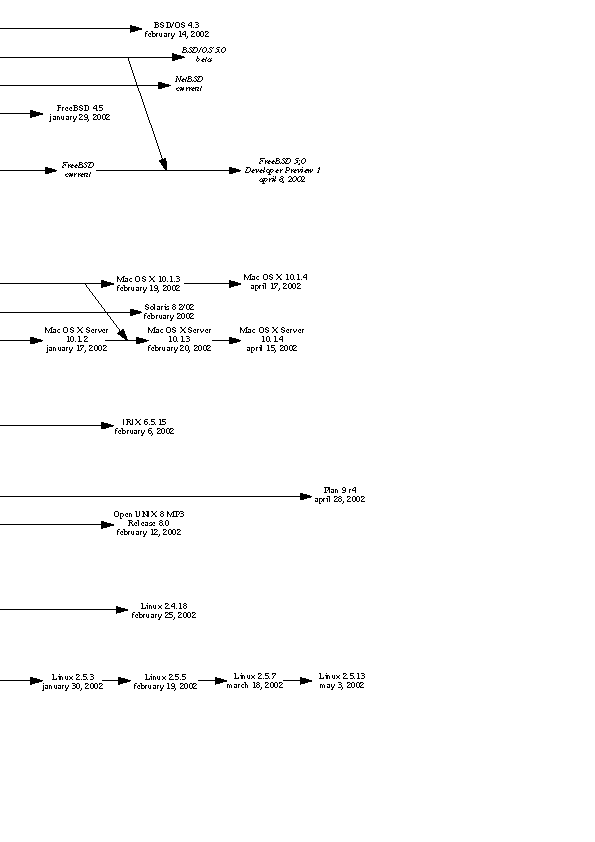 |
| 1 | 2 | 3 | 4 | 5 | 6 | 7 | 8 | 9 | 10 | 11 | 12 | 13 | 14 |
| Click on a page to get a bigger image. | |||||||||||||
Unix History
Diagram
You can download a little diagram of Unix history in PostScript A4 [ http://perso.wanadoo.fr/levenez/unix/unix_a4.ps
] or in PDF A4 [ http://perso.wanadoo.fr/levenez/unix/unix_a4.pdf ]. If you prefer,
you can use the PostScript Letter [ http://perso.wanadoo.fr/levenez/unix/unix_letter.ps
] format or the PDF Letter [ http://perso.wanadoo.fr/levenez/unix/unix_letter.pdf
] format.
If you have a plotter you can use this EPS [ http://perso.wanadoo.fr/levenez/unix/unix.eps ] file, and if you have some problem with it, look here [ http://perso.wanadoo.fr/levenez/eps2ps.html ].
Below, you can see the preview :
 |
 |
 |
 |
 |
 |
 |
 |
 |
 |
 |
 |
 |
 |
| 1 | 2 | 3 | 4 | 5 | 6 | 7 | 8 | 9 | 10 | 11 | 12 | 13 | 14 |
| Click on a page to get a bigger image. | |||||||||||||
Above is a simplified diagram of unix history. There are numerous derivative
systems not listed in this chart, maybe 10 times more! In the recent past, many
electronic companies had their own unix releases. For example, my company was selling
a unix, derivated from another one, and neither system is in this chart because
they were too small. So this diagram is only the tip of an iceberg, with a penguin
on it ;-).
 |
 |
 |
 |
 |
 |
 |
| Brian Kernighan | Dennis Ritchie | Ken Thompson | Bill Joy | Steve Jobs* | Linus Torvalds | Richard Stallman |
* You may be wondering "Why does Steve Jobs appear in this unix history?". Simply because he has made the best unix computer ever : a NeXTcube powered with NeXTSTEP operating system. And now : Mac OS X [ http://www.apple.com/macosx/ ].
Last update : june 1, 2002
Copyright 2002 http://perso.wanadoo.fr/levenez/unix/